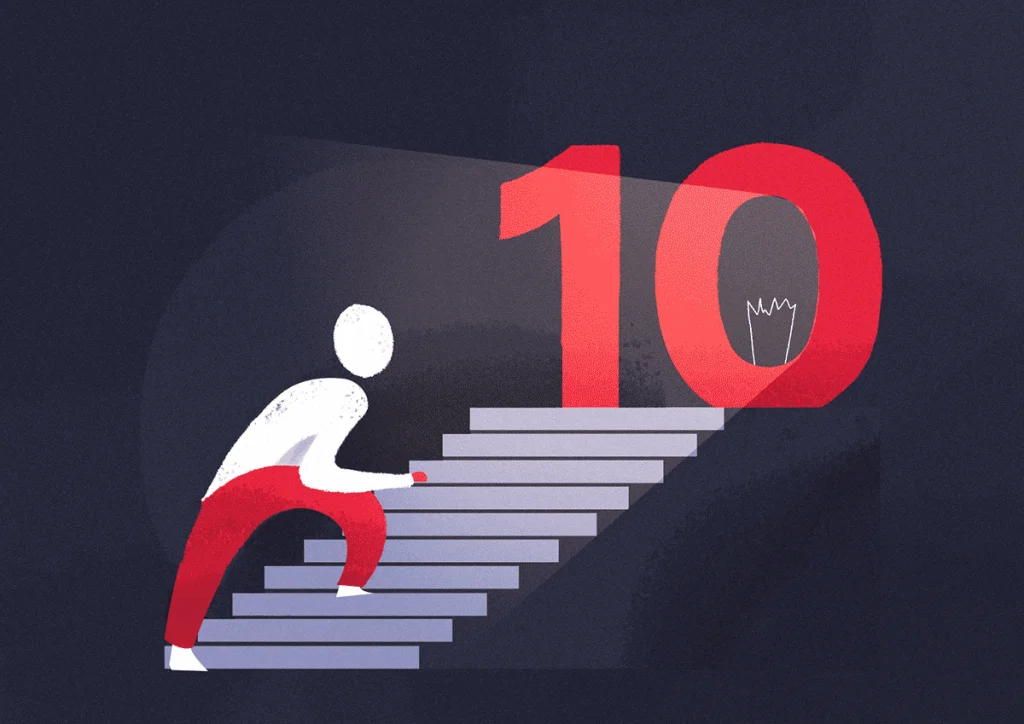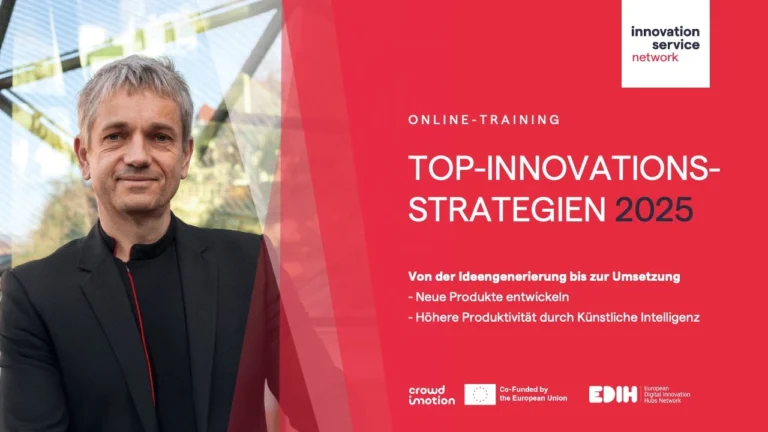

In 10 steps to an innovative company
"If you don't know the port you're sailing into, no wind is right for you."
Lucius Annaeus Seneca
Strategy is defined as the fundamental, long-term behavior and combination of measures for achieving long-term goals (Gabler Wirtschaftslexikon). Originally, the term comes from the military. More than 20 years ago in my studies at the TU-Graz, a time horizon of 10 years was suggested for strategic planning.
10 years is a long time. Anyone who can still pull a strategy paper for 2023 from 2013 out of their drawer today will find little of what is currently moving us. Today, strategy development means planning about 3 years into the future. The rapid development of new technologies, shorter product life cycles and disruptive business models makes it almost impossible to plan for the longer term. Added to this are spontaneous geopolitical events that hardly anyone could have foreseen.
"If we want everything to remain as it is, then it is necessary for everything to change" - [Giuseppe Tomasi di Lampedusa]. This legendary phrase provides a coherent motivation for the high importance of corporate innovation management. For companies that are fundamentally built to be stable, change at ever shorter intervals leads to major challenges. Internal changes must be well planned and follow a long-term red line. At the operational level, spontaneous changes otherwise tend to create chaos and uncertainty. Those who only plan from one order to the next quickly run the risk of losing focus. Strategic planning and innovation management are thus moving to the center of entrepreneurial activities (a matter for the boss) and will affect all industries in the foreseeable future. Terms such as agility, innovation and resilience can be found in many headlines.
The basic sequence for strategy development is simplified:
Ideally, this results in a strong and clear positioning and a basis for entrepreneurial decisions that are effective in the longer term. For innovative companies, the innovation strategy must also be derived from this. This is particularly important for innovation leaders in the industry. The innovation strategy determines how the new thing in the company will come about and how many resources one is prepared to use for it, and much more. An innovation leader must be willing to take high risks. The reward for this is high visibility on the market and a monopoly position when launching new solutions. Thus, innovation also relativizes a price discussion at launch. The first on the market can thus determine the price corridor for new solutions.

Each of these points can have different characteristics (see figure), and not all of them can be combined. It is important that strategies are evaluated and questioned on an ongoing basis. In highly dynamic industries, it can make sense to look at the "strategic fit" at least twice a year or even every quarter. It is also important to communicate strategies to all heads in the company in the sense of a future-oriented corporate culture. Those who want to delve deeper into the topic should read the classic "Blue Ocean Strategy" - [W. Chan Kim and Renée Mauborgne], or also the more recent edition "Blue Ocean Shift", where more space is given to implementation.
Innovation strategies are not only important for companies, but also for regions or nations. And innovation strategies should be implemented through measures that can be measured. Experience shows that this task often does not have the highest priority. For example, who can answer the question of where Austria as a nation should be in 3 years (i.e. 2026) and what strategies and measures will be pursued to achieve this?
Example 1: A look back at the year 2010 and the related document "Der Weg zum Innovation Leader", Strategie der Bundesregierung für Forschung, Technologie und Innovation" provides a quite conclusive strategy document on 46 pages. At that time, Austria was ranked 7th in the "European Innovation Scoreboard 2010" as an "Innovation Follower" with the goal of catching up with the "Innovation Leaders" (e.g. Sweden, Denmark, Finland). Specifically, a research rate of 4% was envisaged, but this was toned down to 3.76% R&D rate because of the economic situation at the time. Basically, I don't think this figure is very meaningful because it is only an input indicator, but the R&D rate is at least easily measurable. Thus, high spending in this segment is basically viewed positively, even if this does not reflect the most recently surveyed mood of the Austrians:inside on the subject of science.
The result in 2020 was ultimately a 3.19% R&D rate and 8th place at EU level. So we have moved, but in the wrong direction. At this point, it should be mentioned that Switzerland, as a non-EU country, would be in undisputed first place in this evaluation, and has been for years.
What was the consequence of the results of the RTI Strategy 2020? Austria's new "RTI Strategy 2030" from 2020 surprisingly has only 11 pages of content and the day-to-day actionism heralded by the pandemic unfortunately still dominates events to the detriment of longer-term planning.
Example 2: At the corporate level, I would like to cite the innovation strategy of Österreichische Post AG as an example. As early as 2011, Österreichische Post AG was the first parcel logistics company to focus on CO2-neutral delivery. Based on the sustainability focus (positioning), numerous innovation measures were launched, including tackling the issue of disposable packaging. As a result of the Corona pandemic, the number of parcels transported increased sharply and so did the number of disposable packages, which ended up in the waste paper container after a single use. To counteract the negative impact on people and the environment and to find a customer-oriented solution, an open innovation strategy was pursued: Customers and partners were invited to contribute their ideas and suggestions in a crowdsourcing idea initiative and later in innovation workshops. Initial tests were quickly carried out with prototypes, which ultimately led to the reusable "Loop" solution. Translated with www.DeepL.com/Translator (free version)
Anyone involved in idea management in a company needs filters to select good ideas. Anyone planning the training and development of employees should also know what will be important in the longer term. One of the first filters for prioritization should therefore be the strategic filter. The development of strategies also requires an examination of trends. Currently, we have the (felt 5th) hype around the topic of artificial intelligence and the topic of sustainability as important drivers. The "long waves of the business cycle", a theory first published by Nikolai Kondratieff in 1926, are only suitable for rough orientation. Currently, people are puzzling over what will dominate the 6th cycle (health seems obvious).
Strategic planning will (have to) take place in ever shorter planning cycles and commercial success is more likely to occur if several sustainable trends favor the use of the new solution by customers. Digitalization today provides the opportunity to design the implementation of ideas in high interactivity with the target group. This can reduce the innovation risk to a minimum. I will discuss this in step 7 "Innovation needs a digital basis".
Does your company already have an innovation strategy or strategic measures? Which trends are of particular importance for your company? How can you recognize a good innovation strategy?
I look forward to feedback and wish you a relaxing and creative Sunday!
Reinhard Willfort, Innovation Doctor, www.willfort.at





